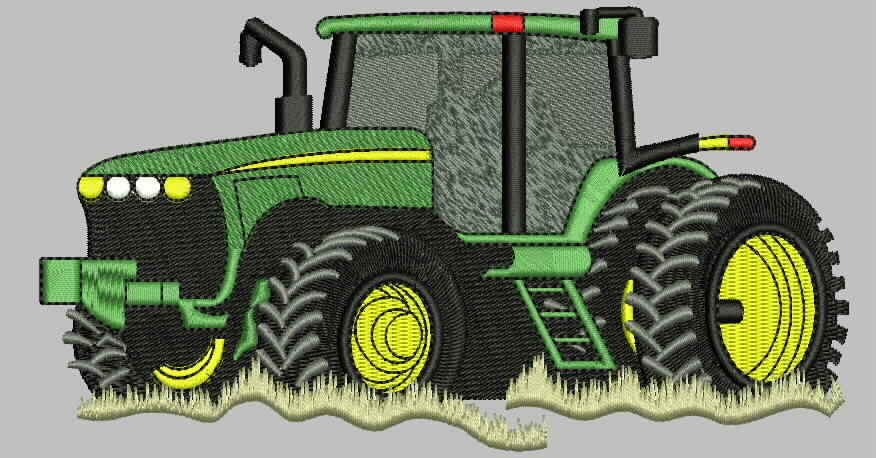
When it comes to embroidery, you might think that the speed of your machine is of minimal importance. How much time do you actually spend sitting in front of your computer? Nevertheless, the speed at which your machine can complete a task can have a significant impact on its productivity. No matter if you are using your sewing machine for business or personal purposes, a slow stitch speed will limit your options. You can easily improve your machine’s performance and speed by following a few simple steps. Let’s examine some important factors affecting embroidery speed and tips for improving it.
Make sure you know your machine’s speed
In general, most people assume that their machine is capable of running at its maximum speed at all times (measured in stitches per minute, or spm). It is unfortunate that this is not always the case. The number of spools installed on your machine, the thickness of the thread, the weight of the fabric, the type of stitch you are using, and whether the machine is equipped with an embroidery hoop can all affect stitching speed. Let’s say, for instance, that you are using a decorative stitch that requires a large amount of thread. The needle has to make larger loops as it feeds the thread through the fabric, making this stitch typically slower than a straight stitch. The speed of your machine may be limited if you are using a decorative stitch on a heavy fabric with a full spool of thread.
Attempt different needles
The type of needle you use will greatly influence the speed of your machine. Thicker needles are generally slower than thicker needles. You might want to try a thinner needle if you are using a general-purpose needle. The 8/70 needle, for example, is thinner than the 8/90 needle. Stitch speed will also be affected by the type of fabric being sewn. There are some fabrics that are thicker than others, which means that the machine must move the needle through them at a slower pace. Try a thinner needle if you are sewing with a thick fabric and using a standard needle.
Make sure that the threading is correct
You can affect the speed of your machine by the way you thread it. Your thread should run smoothly through your machine as much as possible. When you have trouble threading your machine or if it jams frequently, your stitches will take longer to complete than they would on a properly threaded machine. Here are some tips for smooth threading: Use the right threading sequence for your machine for best results. Check your owner’s manual if you are unsure about the threading sequence for your machine. In the absence of your machine’s manual, you can find the threading sequence on the manufacturer’s website. The correct amount of thread should be on each spool. Be sure to correctly wind the thread onto the spool if you are using precut spools. If you are using a bobbin, make sure the thread is wound correctly and that there are no tangles or knots in the thread.
Make your computer setup more efficient
It is recommended that you optimize your computer before you turn on your embroidery machine. Your computer should run as quickly as possible and your software settings should be optimized to ensure optimum performance. It can make a significant difference in the speed at which your machine completes tasks such as loading designs, starting a new project, or sewing. If you wish to optimize your computer for faster embroidery, you should: – Make sure your operating system is up-to-date. Your computer will run more efficiently if you clean up your hard drive. Reduce the demand on the computer’s processor by closing open programs. – Make sure you’ve got enough RAM and storage.
Be sure to check the stitch width and stitch length
Depending on the settings and fabrics you are using, you may find that adjusting the stitch width and stitch length can significantly increase stitch speed. The stitch length of a stitch, for example, will typically increase the stitch speed. However, longer stitches may also be more susceptible to distortion and puckering. In the case of decorative stitches, if you notice that the stitch width is wider than normal, you may wish to adjust the width of the stitch. Wider stitches generally require less time to stitch than narrower stitches. Also, if you find that your stitch length is longer than normal when stitching on a heavy fabric, try reducing it.
Rotational speed should be increased
Your machine’s rotation speed will influence the stitching speed. You will be able to complete stitches more quickly if your machine rotates the fabric more quickly. When sewing on thick fabric, you may wish to increase the rotational speed of your machine. The use of this method can result in a reduction in stitch times as well as increase the power of the machine when pushing the needle through the fabric. The owner’s manual will provide instructions on how to adjust the rotational speed of your machine. It is possible to find your machine’s rotational speed on the manufacturer’s website if you do not have your manual.
Feeding rate should be increased
Stitching speed is influenced by the speed at which the fabric is fed through the needle by your machine. As the machine feeds the fabric faster, the stitches will be completed more quickly. You may want to increase the feed rate if you are sewing on a heavy fabric that is causing your machine to slow down. Your machine will be able to pull the fabric through the needle more effectively and reduce stitch times. If you are unsure how to adjust your machine’s feed rate, please refer to the owner’s manual. The feed rate of your machine can be found on the manufacturer’s website if you do not have your machine’s manual.
In conclusion
In order to improve the speed of your embroidery machine, it is important to understand the factors that affect embroidery speed. You can start experimenting with ways to improve your machine once you understand how these factors affect it. Check the threading, adjust the stitch width and length, and try different needles and rotational speeds to see how they affect your machine’s performance. By working a little bit harder, you can greatly increase the speed of your machine and have more time to do what you enjoy.
 315-215-0681
315-215-0681







